#chester new york
Explore tagged Tumblr posts
Text
Warren County and the Adirondacks
Warren County is one of many counties in the Adirondack region in northern New York (otherwise known as upstate New York), which has "100 welcoming communities, mountains, lakes, verdant valleys and steep cliffs," with Adirondack becoming lumber capital of the world as one book put it. Specifically, the Lake George Region with North Creek, Bolton Landing, and Lake George is featured as part of the Adirondack region. It is worth remembering that RBM I was born in this region and the Mills family lived, basically, in this region, itself. This county is important for the Adirondacks, and so much so that New York State describes the Adirondacks as an integral part of the region:
Warren County was named in honor of General Joseph Warren, an American Revolutionary War hero of the Battle of Bunker Hill. It includes the magnificent Lake George Area, in addition to the cultural hub of the City of Glens Falls and the hometown flair of surrounding Southern Adirondack towns and villages...Tourism is also thriving, with popular destination Lake George drawing thousands of tourists each year.
This brings us to an 1876 map of the "New York Wilderness." I have highlighted, specifically, the water routes (Hudson River from the south) are colored blue and roads colored yellow:
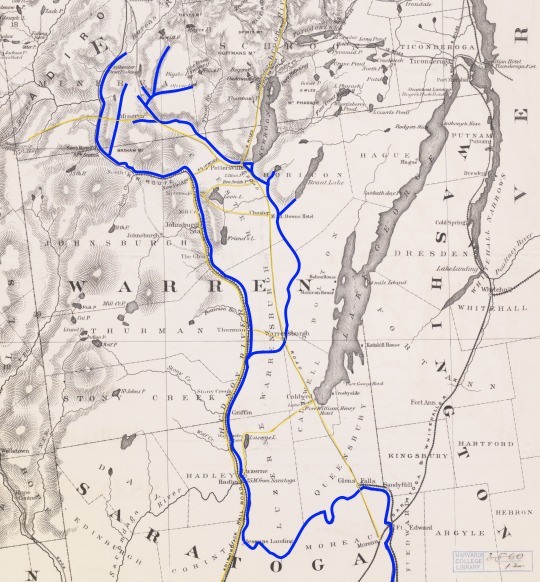
This post was originally published on WordPress in December 2018.
This is interesting. Discarding the railroads, as they were undoubtedly not there in 1835, this shows that water routes connect Glens Falls, Pottersville, Chester (basically), and Minerva, with an extensive road network as well. This would have made it easy for the Mills family to move from place to place and John Mills to be an effective miller or even a captain of a canal boat. This provides further context and support for the Mills family narrative outlined in earlier posts on this blog, especially John's journey to Warren County, which I've said in the past was up the Hudson River. Of course there are remaining questions and family mysteries, as I noted in the past, but maps like this give us another piece of the puzzle.
It also connects to a number of other realities. For one, John would have been one of the first settlers of Glen's Falls, which was not incorporated from Queensbury until 1839, four years after he arrived in Warren County. Furthermore, Warren County was relatively new. It had only been carved out of Washington County in March 1813. John could have easily gone up to Minerva to trade his supplies. It wouldn't be that hard. He would die and be buried not in the cemetery in Glens Falls but in Chester Cemetery in Chester, Orange County.
© 2018-2023 Burkely Hermann. All rights reserved.
#warren county#new york state#adirondacks#genealogy#family history#ancestry#wordpress#mills#mills family#maps#canal boats#canals#pottersville#chester new york#minerva new york#glens falls#1830s#1810s#19th century#cemeteries
0 notes
Text
The Elegant Mr. Arthur

It was about two hours after midnight on September 20, 1881, and not unusual for the resident of 123 Lexington Avenue in New York City to be up at such a late hour, or to have plenty of guests. In fact, he preferred to keep late hours, entertaining friends deep into the night with late-night dinners, drinks, and endless conversation. Yet, on this night, 123 Lexington Avenue was somber and the mood was grave. Just a few hours earlier -- at 11:30 PM -- a messenger knocked on the door of Vice President Chester Alan Arthur's Manhattan brownstone and handed Arthur a telegram. Surrounded by a few friends and colleagues, Arthur read that President James A. Garfield, just 49 years old and in office for barely six months, had died in a beach cottage at Elberon, New Jersey. Turning to his friends in his sitting room, Arthur said, "I hope -- my God, I do hope it is a mistake."
On July 2nd, President Garfield was shot twice and seriously wounded by Charles Guiteau as he walked through the Baltimore & Potomac Railroad Station in Washington, D.C. with Secretary of State James G. Blaine and Secretary of War Robert Todd Lincoln (son of Abraham Lincoln) en route to a speaking engagement at his alma mater, Williams College in Massachusetts. Guiteau was a disgruntled, disturbed, and delusional office-seeker who had been pleading for an appointment as consul to Paris (though he was willing to "settle" for Vienna) despite an absence of diplomatic and political experience and a complete lack of general qualifications. Hounding Garfield throughout the early months of an Administration that had just begun on March 4, 1881, Guiteau's constant harassment of the new President finally resulted in Secretary Blaine to never return to the White House again. Guiteau felt that he had been entitled to some office, particularly an ambassadorship, and was terribly upset that Garfield and his Cabinet members refused to consider his requests. Blaine's order to stay away drove Guiteau to purchase an ivory-handled .44 British Bulldog revolver (specifically chosen because Guiteau felt that particular firearm would look good in a museum) and he began stalking Garfield throughout Washington before finally shooting him inside the rail station two days before Independence Day 1881. As police arrested him, Guiteau shouted, "I am a Stalwart of the Stalwarts...Arthur is President now!"
But Arthur wasn't President; not yet at least. Garfield was a physically robust man and relatively young in comparison to most Presidents to date. While one bullet had lodged in Garfield's spine, the other bullet grazed his arm and caused no significant damage. While it appeared that he was gravely ill immediately following the shooting, Garfield's vital signs soon started to improve and the American people began to get their hopes up about a full recovery. A vigil of sorts was underway as President Garfield convalesced in the White House, and his doctors issued regular bulletins updating his condition. Garfield's doctors also poked and prodded him with unsterilized instruments and dirty fingers to attempt to locate the bullet still inside of his body. Had they left it alone, Garfield almost certainly would have survived; his wounds were significantly less dangerous than those survived 100 years later by 70-year-old Ronald Reagan. However, the unnecessary poking and prodding resulted in a serious infection that ravaged Garfield's body, weakened his heart, left the muscular, 215-pound President emaciated, weighing less than 135 pounds, and turned the 49-year-old Garfield's dark brown beard and hair a ghastly white color. Fighting for his life in the sweltering summer heat of Washington, on September 6th it was finally agreed upon to transport Garfield to a cottage on the Jersey Shore in hopes that he could benefit from the change of scenery and from the fresh ocean air. Sadly, it was too late. The infections were accompanied by blood poisoning and pneumonia, among other ailments. On September 19th at 10:35 PM, Garfield suffered a massive heart attack and was pronounced dead. An hour later the messenger arrived at 123 Lexington Avenue.
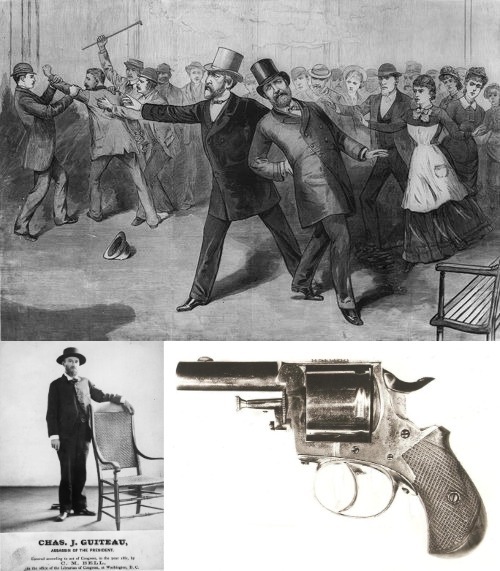
•••
The Vice Presidency was a stretch. Chet Arthur of New York as Vice President? When offered the Republican Vice Presidential nomination by James Garfield in 1880, Chester Arthur was urged by his political mentor and close friend, Stalwart leader Roscoe Conkling, to decline the appointment. Arthur, a man who had never spent a day in Congress or been elected to any office at any level, went against Conkling's wishes for perhaps the first time in his life. The Vice Presidency was certainly a stretch, but President of the United States? That was an almost frightening thought to a nation still recovering from Civil War and desperately seeking civil service reform, especially now that a disgruntled office-seeker had assassinated the President. Arthur was President left a lot of Americans worried -- some because Arthur's political background was as the powerful and somewhat shady Collector of the Port of New York, appointed during the corrupt Administration of President Ulysses S. Grant and eventually fired by President Rutherford B. Hayes during a housecleaning of corrupt institutions; and some because James Garfield's murderer had claimed to be a Stalwart and, by his own words, insinuated that Garfield's shooting might be a conspiracy on behalf of the Conkling/Arthur side of the divided Republican Party.
Chester Arthur was a creature of the era known as the "Gilded Age" and was the symbolic mascot for the widespread political corruption of the 1870s due to his position at the Port of New York. At a moment when drastic reform of the civil service was being demanded by many Americans outraged by James Garfield's assassination, Garfield's successor was a man who, for years, had been the poster boy for crony patronage and machine politics. Born in Vermont in 1829, Arthur was the son of a preacher and grew up mostly in upstate New York, graduated from Schenectady's Union College in 1848, briefly taught school while studying law, and was admitted to the bar in 1854. As his law practice grew in the 1850s, Arthur immersed himself in New York Republican politics yet never ran for office. A political appointee to the New York State Militia, he found himself serving during the Civil War and his superb organizational skills led to quick promotions all the way to quartermaster general in 1862, a position which carried the rank of brigadier general. As a political appointee to the militia, however, Arthur served at the pleasure of the Governor of New York and was forced to resign in 1862 when a Democratic Governor took office. Returning to New York City, Arthur resumed his law practice and political gamesmanship. More appointments came his way as he supported Republican candidates throughout the state and worked on national campaigns such as President Lincoln's 1864 bid for re-election and Ulysses S. Grant's 1868 Presidential campaign.
In 1871, President Grant appointed Arthur as Collector of customs as the Port of New York, which gave Arthur responsibility for about 75% of the nation's custom duties and was one of the most powerful patronage positions available in the United States government. Arthur used his office to efficiently raise money for Republican campaigns and candidates, supporting President Grant's 1872 re-election campaign by seeking (if not "requiring") contributions from his employees at the customhouse. In 1876, Arthur championed his political mentor, Senator Roscoe Conkling, for the Republican Presidential nomination, but supported Rutherford B. Hayes in the general election, once again using the employees at the customhouse to help raise money to finance the successful Republican campaign. However, once Hayes was elected, the new President made it clear that he was serious about civil service reform and that meant reforming Arthur's customhouse, too. In 1877, Arthur testified before the Jay Commission, which was formed to investigate charges of corruption and eventually recommended that President Hayes reduce the workforce of the customhouse and eliminate the corrupt elements that had worked there for so long. Due to Arthur's longtime support of the Republican Party, President Hayes offered him an appointment as consul in Paris (the same job Charles Guiteau would kill James Garfield for a few years later) in order to quietly remove him from the Port of New York. When Arthur refused the appointment, the President fired him and Arthur resumed his law practice in New York City.
When Arthur headed to the 1880 Republican National Convention at the Interstate Exposition Building in Chicago, it was as a New York delegate supporting the aspirations of former President Ulysses S. Grant who was coming out of retirement to seek an unprecedented third term. However, neither of the front-runners for the nomination -- Grant and Senator James G. Blaine of Maine -- could capture enough votes from delegates to clinch the nomination. After thirty-five ballots, Blaine and another prospective candidate, Treasury Secretary John Sherman of Ohio, threw their support behind a dark horse candidate -- Ohio Congressman James A. Garfield. On the next ballot, Garfield clinched the nomination and reached out to the opposing wing of the Republican Party for his Vice Presidential choice. The first choice, Levi P. Morton of New York (who would later serve as President Benjamin Harrison's Vice President), declined Garfield's offer, and Arthur -- who had never previously even sought an elective office -- excitedly accepted, much to the chagrin of his angry political mentor, Roscoe Conkling. Not confident in Garfield's chances for election, Conkling told Arthur, "You should drop it as you would a red-hot shot from the forge." Arthur replied, "There is something else to be said," and Conkling asked in disbelief, "What, sir, you think of accepting?". Despite the complaints and anger of Conkling, Arthur told him, "The office of Vice President is a greater honor than I have ever dreamed of attaining. I shall accept. In a calmer moment you will look at this differently."
Following the election, Arthur prepared to settle into the quiet role of Vice President during the 19th century. The Vice President of the United States has only one real responsibility -- to preside over the Senate and even that responsibility is normally delegated to Senators who rotate as presiding officer almost daily. The powerful or even influential American Vice Presidency is a fairly recent evolution, not even 50 years old. While some Vice Presidents were relied on for advice or counsel or given larger duties than others, most Vice Presidents were so far removed from the Executive Branch that they were not only kept out of the decision-making process, but also kept in the dark about certain information. For example, when President Franklin D. Roosevelt died towards the end of World War II in 1945 and was succeeded by his Vice President, Harry S. Truman, the new President had to be quickly briefed about the existence of the Manhattan Project to develop atomic weaponry. Still, the first Vice President to have an office in the White House was Walter Mondale and that didn't occur until 1977, so in 1881 a Vice President was expected to preside over the Senate on special occasions, cast a tie-breaking vote when necessary, and be available to take the oath of office if the President happened to die or resign.
Like most 19th century Vice Presidents, Chester Arthur didn't even spend much time in Washington, and he was returning to his regular home in New York City on July 2, 1881 when he stepped off a steamship with Roscoe Conkling and was told that President Garfield had been shot. In fact, the message that Arthur received first erroneously reported that Garfield was already dead and at the request of Garfield's Cabinet, the stunned Vice President immediately returned to Washington, D.C. to proceed with the next steps necessary for maintaining the continuity of government. When Arthur arrived in Washington, President Garfield's condition had improved and his recovery continued to show signs of promise as the Vice President and the nation prayed for him and held vigil throughout the summer. Shaken by rumors that he and his "Stalwart" wing of the Republican Party conspired to assassinate Garfield, Arthur returned home to New York City, hesitant to invite criticism that his continued presence in Washington was merely an eager deathwatch so that he could grab power.
Garfield clung to life for eighty excruciating days with doctors probing him in an effort to remove the bullet in his body, causing infections and leaving the President suffering from blood poisoning which led him to hallucinate at times. The Navy helped rig together an early form of air conditioning in Garfield's White House sickroom in order to give him relief from Washington's stifling summer conditions. When Garfield was taken by train to New Jersey in early-September, it was clear to many that the long vigil was nearly over. More infections set in, along with pneumonia and painful spasms of angina. When the messenger arrived at 123 Lexington Avenue just before midnight on September 20, 1881 to inform Arthur that President Garfield had died just 60 miles away, the new President wasn't surprised, but he also wasn't quite prepared. The nation worried about the lifetime political operative stepping into the position being vacated by the promising President assassinated before he could enact the civil service reforms promised in his Inaugural Address. What would Arthur -- the quintessential patronage politician -- do as President? Nobody knew, but Chester Alan Arthur had an idea. •••

It was fitting that Arthur was surrounded by friends when he took the oath of office at his home in Manhattan at 2:15 AM on September 20, 1881. Arthur's beautiful wife, Nell, died of pneumonia in January 1880 and he was inconsolable for months, regretting for the rest of his life the fact that she never saw his election as Vice President or ascendancy to the Presidency. People who knew Arthur stated that he clearly never fully recovered from her death, and that as a "deeply emotional...romantic person," it was no surprise that he ordered that fresh flowers were placed before her portrait in the White House every day while he was President.
Chester Arthur had a lot of friends. That's what happens when you control as many lucrative patronage positions as Arthur controlled for as long as Arthur controlled them. But it wasn't just his political position that gained him friends. Arthur was a great storyteller, a man who loved to hunt and fish, kind, easy-going, charming, graceful, and smooth. During his life he was nicknamed "Elegant Arthur" and is considered one of the most stylish of Presidents. Photographs of Presidents from the 19th century typically show us men no different than statues. They dressed the same, they looked the same, and when portrayed in the black and white photos of the time, we feel no differently when we see their pictures than when we see a slab of marble carved in their image. Arthur leaps out of his photographs, however. He was a very large man for his era, standing 6'2" and weighing around 220 pounds during his Presidency. Large muttonchops connected to a bushy mustache and his close-cropped, wavy brown hair seemed to pull back his forehead and place more emphasis on expressive black eyes that easily reflected his moods. While it seems that most Presidents of the 19th century wore the same boring black suit and black tie like a uniform, Arthur's ties are patterned, jewelry is visible, collars are crisp, handkerchiefs are folded creatively, and his lapels shine as if they were polished along with his shoes. We see photographs of Arthur in fashionable overcoats, a wide variety of hats, and he employed a personal valet who helped the President change clothes for every occasion -- he was said to have over 80 pairs of pants.
Most apparent of all is that Arthur was a gentleman -- an interesting man with superb social skills and fastidious manners. Even as one of the top operatives in New York's Republican political machine of the corrupt 1870s, he was nicknamed the "Gentleman Boss." As President, he brought entertainment back to the White House -- something that had been missing on a large scale since before the Civil War twenty years earlier. His predecessor, Rutherford B. Hayes, was one of the few critics of this development, stating that there was "nothing like it before in the Executive Mansion -- liquor, snobbery, and worse." Arthur also redecorated the White House, hiring Louis Comfort Tiffany to help with the design. To help raise money for the redecoration, Arthur basically held a White House yard sale. On the lawn of the mansion, twenty-four wagons full of history (including a pair of Abraham Lincoln's pants that had been left behind in a closet) were sold to citizens. To some, the items were priceless; to President Arthur, they were ugly and a man like Chester Arthur did not live in an ugly home. Several weeks after Garfield died, Arthur got his first look at his new home and quickly stated, "I will not live in a house like this." He didn't end up moving into the White House until three months into his Presidency.
•••

[Secretary of State James G. Blaine, President Arthur, and former President Ulysses S. Grant, view the open casket of President James A. Garfield as he is lying in state in the Capitol Rotunda.]
After taking the oath of office at home in Manhattan in the early hours of September 20, 1881, now-President Arthur proceeded to Washington, D.C., stopping in Long Branch, New Jersey to pay respects to the late President Garfield and his grieving family. Once Arthur succeeded to the Presidency upon Garfield's death, there was no Vice President, no president pro tempore of the Senate, and no Speaker of the House (Congress has not elected its leadership yet), thus, there was no Constitutional line of succession. If something had happened to Arthur at that moment, the United States would have faced an unprecedented Constitutional crisis. As his first act as President, Arthur immediately called the Senate into session in order to select their leadership positions and position someone in the line of succession. Upon arriving in Washington, Attorney General Wayne MacVeagh suggested that Arthur take a second oath of office and he did so at the U.S. Capitol on September 22nd, in the presence of Garfield's Cabinet, members of Congress, Supreme Court Justices, and former Presidents Grant and Hayes.
Americans worried about the former machine politician's integrity were transformed quickly as Chester Arthur underwent something of a transformation himself. Widely considered a lapdog of New York's Roscoe Conkling, Arthur broke ranks with the party boss and pushed for the same civil service reform championed by James Garfield prior to the assassination. Arthur's former associates in the New York Republican Party were disappointed when he declined their requests for political favors. One former colleague sadly reported, "He isn't 'Chet' Arthur anymore. He's the President." Arthur found that the transformation was almost automatic and out of his control, noting that "Since I came here I have learned that Chester A. Arthur is one man and the President of the United States is another." His old benefactor, Conkling, was one critic of the new President, complaining "I have but one annoyance with the Administration of President Arthur and that is, in contrast with it, the Administration of Hayes becomes respectable, if not heroic." Arthur signed the Pendleton Act in 1883 which created a modern civil service system and eliminated the spoils system that had long dominated American politics. This reform, which Conkling called "snivel service" was the final break between the longtime friends and colleagues.
To the American people, the great surprise of an Arthur Administration was the fact that it was clean, honest, and efficient. Arthur helped lift the gloomy moods that had shadowed Washington throughout the Civil War, Lincoln's assassination, Reconstruction, the corruption of the Gilded Age, the wildly controversial Election of 1876, and Garfield's assassination. His popularity rose throughout his term and most critics focused on his lavish entertainment or the fact that he was notoriously late for meetings and seemed bored or lethargic at times. He often procrastinated -- as a White House clerk once said, "President Arthur never did today what he could put off until tomorrow." Still, most Americans were happy with President Arthur and echoed the thoughts of Mark Twain who said, "I am but one in 55 million; still, in the opinion of those one-fifty-five-millionth of the country's population, it would be hard to better President Arthur's Administration."
He was bored, though. President Arthur didn't like being President. He enjoyed the entertaining dinners that he could throw and loved public events or ceremonies that allowed him to meet the people of the United States, but the desk work was tedious and he wasn't interested in policy. Arthur stayed up late and seemed to vacation often, which perplexed many people because it was said that he was constantly exhausted. What they didn't know was that from almost the time he became President, Chester Arthur was dying. In 1882, he was diagnosed with Bright's disease, a fatal kidney ailment at the time. Despite reports that he was suffering from the disease, Arthur hid it from the public, desperately protecting his privacy, as always. Arthur's distaste for the Presidency probably stemmed in part from depression triggered by the Bright's disease. At times, Arthur suffered from debilitating illness and it was always covered with a story about the President catching a cold during a fishing trip or spending too much time in the sun while hunting. In a letter to his son, Alan, in 1883, the President confided, "I have been so ill that I have hardly been able to dispose of the...business before me."
Despite his popularity, Republican leaders opposed Arthur's nomination for a term as President in his own right in 1884. The man who opposed it most, however, was the President himself, who stated "I do not want to be reelected." Not only was he disinterested in a second term, but he knew very well that there was a possibility he might not even survive to the end of his current term. He did, and after attending the inauguration of his successor, Grover Cleveland, on March 4, 1885, Arthur returned home to New York City where his health rapidly declined. The former President was aware that he was dying and made plans for a relatively quiet retirement, deciding to practice law, but doing very little work due to his health. When asked about his future, Arthur said, "There doesn't seem anything for an ex-President to do but to go out in the country and raise big pumpkins." On November 16, 1886, Arthur suffered a stroke that paralyzed his left side. Gravely ill, he called his son to his bedside the day before his death and had all of his public and private papers stuffed into trash cans and burned. On November 18, 1886, the 57-year-old former President died in the same place he became President just five years earlier, 123 Lexington Avenue in New York City. After a quiet funeral at the Church of Heavenly Rest on Fifth Avenue in New York, Arthur's remains were buried next to his beloved wife at Rural Cemetery in Albany, New York.
•••
When President Arthur had many of his personal papers burned prior to his death, he eliminated one of the best sources of information about his life and career for future historians. With a thin resume and a fairly uneventful Presidency, there wasn't much public information about his career, either. This leaves us with very little to remember Chester Alan Arthur by. Research on his life -- particularly his personal life -- is difficult, and Arthur would have appreciated that. During his Presidency, leaders of the temperance movement called on Arthur and urged him to follow the non-alcoholic lifestyle led by President Hayes and his teetotaler wife, who became known as "Lemonade Lucy".
Arthur's response: "Madam, I may be President of the United States, but my private life is nobody's damn business."
And so it isn't.
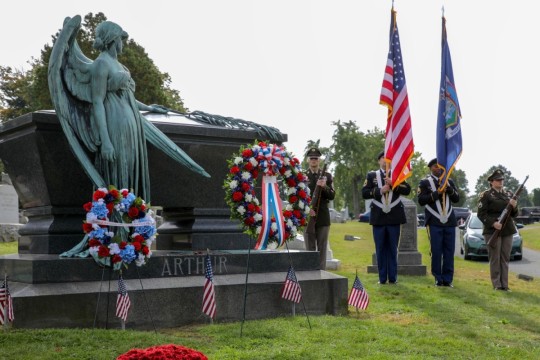

#History#Presidents#Chester A. Arthur#Chester Alan Arthur#President Arthur#Arthur Administration#Presidential History#Presidency#Writings#Essays#Original Essays#The Elegant Mr. Arthur#James A. Garfield#President Garfield#Garfield Administration#Presidential Assassinations#Assassination of James Garfield#Garfield Assassination#1880 Election#Election of 1880#Gilded Age#New York Politics#Charles Guiteau#Roscoe Conkling#Vice Presidents#Vice President Arthur#Presidential Succession
39 notes
·
View notes
Text








30 Day Linkin Park Challenge
↪ Day 17: A favorite ballad or/and acoustic version of a Linkin Park song → Pushing Me Away {Piano Version} I've lied to you The same way that I always do This is the last smile That I'll fake for the sake of being with you
#30 Day Linkin Park Challenge#30daylpchallenge#Chester Bennington#Mike Shinoda#Linkin Park#linkinparkps#Pushing Me Away#New York#Live#2007#gifs
25 notes
·
View notes
Text
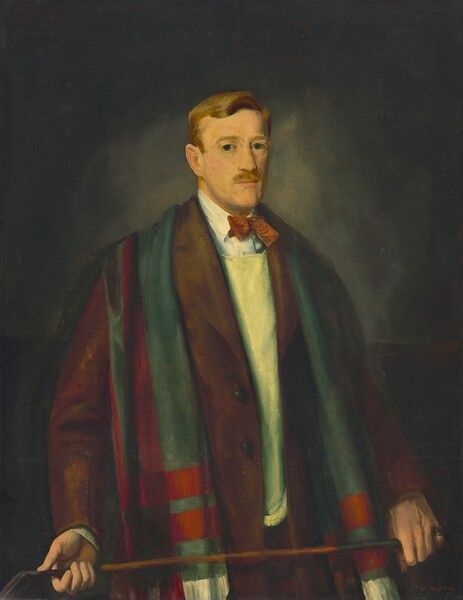
Chester Dale
Artist: George Bellows (American, 1882-1925)
Date: 1922
Medium: Oil on canvas
Collection: National Gallery of Art, Washington, DC, United States
Description
Hardworking and ambitious, Chester Dale had risen from his modest beginnings on Wall Street at the turn of the century to become a wealthy investment banker and member of the New York Stock Exchange by 1918. In the late teens he and his wife Maud began amassing an outstanding collection of modern American and French paintings as well as a number of works by the Old Masters. After retiring in 1935, Dale served as a trustee of several major art museums, including the National Gallery of Art, of which he became president in 1955. Beginning in 1943, the Gallery received the majority of Dale’s collection, including this portrait by Bellows and three of the artist’s most iconic paintings: Both Members of This Club, Blue Morning, and The Lone Tenement.
Bellows painted this half-length portrait of Dale in his New York studio in January 1922 following three earlier attempts to depict Maud in 1919. Despite Bellows’ intention to represent Dale as a sportsman at leisure, the portrait possesses a formal, awkward quality. Dale’s tentative expression seems at odds with his reputation as a self-made millionaire and cosmopolite. Some art historians have suggested that Dale was dissatisfied with the image, and that it exemplifies the artist’s difficulty with conventional commissioned portraiture. Nevertheless, Bellows’ portrait of Dale brings to mind the court portraits of King Philip IV of Spain painted by Diego Velázquez (Spanish, 1599 - 1660), and it is likely that Bellows deliberately quoted this famous Old Master source as an allusion to the fact that both Dale and King Philip were powerful men who collected art on a princely scale.
#portrait#man#half length#chester dale#american culture#new york#american history#standing#suit#sweater#shirt#scarf#george bellows#interior#american painter#american art#oil on canvas#oil painting#artwork#painting#20th century painting#the national gallery
13 notes
·
View notes
Text

Abandoned Camp LaGuardia, Chester, New York
Emma & Shawn Ferriter
#art#photography#abandoned places#abandoned#urbexphotography#urbexsupreme#urbex#zombilenium#decay#camp#laguardia#chester#new york#emma ferriter#shawn ferriter#urban exploration
90 notes
·
View notes
Text

Uncanny x-men in the Danger room.
#marvel comics#uncanny xmen#danger room#new york#west chester#cyclops#scott summers#emma frost#white queen#magneto#erik lehnsherr#rogue#anna marie#magik#illyana rasputin#the beast#hank mccoy#wolverine#logan howlett
20 notes
·
View notes
Text
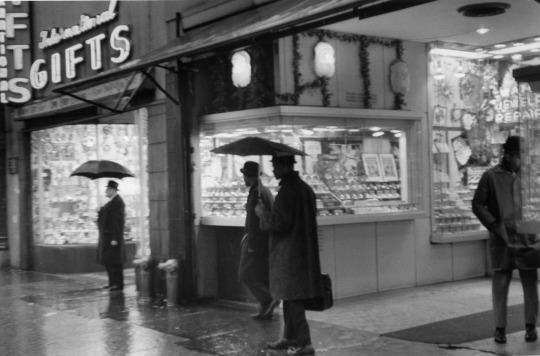
Chester Higgins Jr. - Rainy Times Square, Manhattan, 1969
13 notes
·
View notes
Text
New York Comic Con Part 6 (Look...I'm No Sugar Daddy...Those Days Are Long Over...)


He's seen better days, I assume!






Like, ZOINKS!!!




...really? We're doing this?
...give me Fred, please.
And since Chester is here---
youtube
(Cut to Soundwave, Blaster, Bumblebee and Rumble having a party. Suddenly Starscream walks in front of the doorway.)
Starscream: Uh...you guys having a party?
Blaster: ...nope
Soundwave: Negative.
Bumblebee: No.
Rumble: No.
(Rumble awkwardly closes the door. The music plays again.)
Starscream: I can still see you.
Soundwave's Voice: Yes, we know.





And yes, finally, the last of the stuff you will have to put into storage one day to make room for more stuff.
#new york comic con#nycc 2024#marvel comics#venom#daredevil#ghostbusters#back to the future#godzilla#wednesday netflix#the walking dead#naruto#jujutsu kaisen#scooby doo#tony the tiger#frosted flakes#chester cheetah#persona 5#cheetos#fruity pebbles#cocoa pebbles#the flintstones#fred flintstone#barney rubble#mega man#cyberpunk edgerunners#street fighter#Youtube
5 notes
·
View notes
Text

0 notes
Text
Philadelphia Union v New York Red Bulls:A Lackluster Affair Nobody Got Wings
Jim Curtin receives Boo’s at home in pre-game announcement a sight and sound I’ve not seen in a long while since his hiring. To imagine one of the best coaches ever in Major League Soccer is on a hot seat to lose his job due to a poor roster build by the front office is both terrifying and shocking. Going into this season if you had asked if I could ever see a day in which Jim Curtin would be…
#Chester#Futbol#Jim Curtin#Major League Soccer#MLS#New Jersey#New York#New York Red Bull#Noah Eile#PA#Philadelphia Union#Sandro Schwarz#Soccer#Subaru Park
0 notes
Text
Summer Days
Julie, our fabulous #photography blogger, shares some of her recent #summer photo shoots from #Pennsylvania and #NewYorkCity. With her documentary style, she captured a graduation party, summer by the lake, and the vibrancy of the city. #MarywoodArt
#Art#Black and white#Black and white photography#chester county pa#Color photography#documentary photography#documentary style#Landscape photography#Marywood Art#Marywood Art Department#Marywood University#Marywood University Art Department#New York#NYC#PA#photographer#Photography#summer 2024#summer photography#Where Creativity Works
1 note
·
View note
Text
Why did John Mills (and other Millses) settle in Warren County?
This was originally the fourth chapter in my family history on the Mills family, but it is has broken apart from the original version on WordPress, so as to improve readability.
It seems that individuals like John Mills were farmers in Ireland, so one could say that this is why he, and others settled in Warren County. However, Chester is, as a Google Maps calculation shows, is about 56 miles away from New York City, if one walks of course. The most likely reason he settled there is someone, like Thomas Mills (a possible brother), settled there before him and he came to the United States to join them, have a better life, and maybe even flee from persecution in his native land, although the latter is unlikely.
© 2018-2023 Burkely Hermann. All rights reserved.
#immigration#irish history#irish genealogy#mills family#mills#farmers#chester new york#new york#chester#new york state#google maps#genealogy#family#family history#ancestry#wordpress
0 notes
Text
ICE SPOTTED IN THESE LOCATIONS JAN 28 2025
*THIS INFORMATION WAS TAKEN FROM PADET.COM* ICE HAS BEEN SPOTTED IN THESE CITIES TODAY
BROOKLYN NEW YORK
SEATTLE WASHINGTON
HOUSTON TEXAS
RALPHS CALIFORNIA
STAMFORD CONNECTICUT
LOUISVILLE KENTUCKY
NEW YORK NEW YORK
BAY POINT CALIFORNIA
PITTSBURG CALIFORNIA
WATERBURY CONNECTICUT
DAYTONA BEACH FLORIDA
DALLAS TEXAS
ONEIDA COUNTY NEW YORK
CERRITOS CALIFORNIA
LOS ANGELES CALIFORNIA
CLAYTON NEW JERSEY
LOVELAND COLORADO
HOFFMANS ESTATE ILLINOIS
MANASSAS VIRGINIA
SAN DIEGO CALIFORNIA
GRAND JUNCTION COLORADO
BILOXI MISSISSIPPI
FLORENCE KENTUCKY
JANESVILLE WISCONSIN
MCKINNEY TEXAS
TARRYTOWN NEW YORK
NEWARK NEBRASKA
STONEHAM MASSACHUETTS
HACKENSACK NEW JESERY
PORT CHESTER NEW YORK
OXNARD CALIFORNIA
FORT VALLEY GEORGIA
ATLANTA GEORGIA
BOSTON MASSACHUETTS
SLEEPY HOLLOW NEW YORK
YAKIMA WASHINGTON
ROGERS ARKANAS
SPARTANBURG SOUTH CAROLINA
OSSINING NEW YORK
NEW CANEY TEXAS
BEAVERTON OREGON
ROOSEVELT NEW YORK
TOPPENISH WASHINGTON
AUSTIN TEXAS
PHILADELPHIA PENNSYLVANIA
CHICAGO ILLINOIS
LEXINGTON KENTUCKY
CAMDEN KENTUCKY
WEST VIRGINIA (NO SPECIFIC TOWN WAS LISTED)
PHOENIX ARIZONA
CLEVELAND TENNESSE
THESE LOCATIONS WERE WRITTEN IN THE TIME I HAVE BEFORE I GET ON THE BUS, BUT THEY WERE TAKEN FROM THIS WEBSITE
UPDATED FROM COMMENTS, JAN 30TH, 2025:
- KILLEEN TEXAS
- PORTLAND/WESTBROOK AREA MAINE
- DES MOINES IOWA STATE
- DAYTON OHIO
- ITHACA NEW YORK
- ROCHESTER NEW YORK
- ARKON OHIO
- CLEVELAND OHIO
- BUFFALO NEW YORK
- STATESBOROUGH GEORGIA
- FARGO MINNESOTA
THIS WEBSITE CAN BE USED AS A MAP SORTA, IT IS USED TO REPORT ICE SIGHTINGS
#ice raids#fuck trump#fuck elon musk#us politics#mexican#immigration#immigrants#political activist#politics#political#trump is a threat to democracy#trump administration#donald trump#ice#usa politics#american politics#asian
3K notes
·
View notes
Text



📷 Chad Kamenshine
#Chester Bennington#Mike Shinoda#Linkin Park#linkinparkps#Live at Madison Square Garden#New York#Live#2011
25 notes
·
View notes
Text
I have to talk about Chester Arthur. His story makes me go crazy. A mediocre president from the 1880s who's completely forgotten today has one of the best redemption stories I've ever heard and I need to make people understand just how cool his story is.
So, like, he starts out as this idealist, okay? He's the son of an abolitionist minister and becomes famous as a New York lawyer who defends the North's version of Rosa Parks whose story desegregates New York City's trolley system.
Then he starts getting pulled into politics and becomes one of the grimiest pieces of the political machine. He wants money, power, prestige, and he gets it. He becomes the right-hand man of Roscoe Conkling, the most feared political boss in the nation, a guy who will throw his weight around and do the most ruthless things imaginable to keep his friends in power and destroy his enemies.
Because Arthur's this guy's top lackey, he gets to be Controller of the Port of New York--the best-paying political appointment in the country, because that port brings in, like, 70% of the federal government's funds in tariffs. He gets a huge salary plus a percentage of all the fines they levy on lawbreakers, and because he's not afraid to make up infractions to fine people over, he is absolutely raking in the dough. Making the rough equivalent of $1.3 million a year--absolutely insane amounts of money for a government position. He's spending ridiculous sums on clothes, buying huge amounts of alcohol and cigars to share with people as part of his job recruiting supporters to the party, going out nearly every night to wine and dine people as part of his work in the political machine. He's living the high life. Even when President Hayes pulls him from his position on suspicions of fraud, he's still living a great life of wealth, power, and prestige.
Then in 1880, his beloved wife dies. While he's out of town working for a political campaign. And he can't get back in time to say goodbye before she dies. Because he's a guy who has big emotions, it absolutely tears him up inside, especially because Nell resented how much his political work kept him away from home. He has huge regrets, but he just moves in with Roscoe Conkling and keeps working for the political machine.
And then he gets a chance to be vice president. The Republican Party has nominated James Garfield, a dark horse candidate who wants to reform the spoils system that has given Conking his power and gave Arthur his position as Port Controller. Conkling is pissed, and he controls New York, and since the party's not going to win the election without New York, they think that appointing Conkling's top lackey as vice-president will pacify him.
They're wrong--Conkling orders Arthur to refuse--but Arthur thinks this sounds like a great opportunity. The only political position he's ever held is Port Controller--a job he wasn't elected to and that he was pulled from in disgrace. Vice President is way more than he could ever have hoped for. It's a position with a lot of political pull and zero actual responsibilities. He'll get to spend four years living in up in Washington high society. It's the perfect job! Of course he accepts, and Conkling comes around when he figures out that he can use this to his advantage.
When Garfield becomes president, Arthur does everything he can to undermine him. He uses every dirty political trick he can think of to block everything that Garfield wants to do. He refuses to let the Senate elect a president pro tempore so he can stay there and influence every bill that comes through. He all but openly boasts of buying votes in the election. He's so much Conkling's lackey that he may as well be the henchman of a cartoon supervillain. On Conkling's orders, he drags one of Garfield's Cabinet members out of bed in the middle of the night--while the guy is ill--to drag him to Conkling's house so he can be forced to resign. He's just absolutely a thorn in the president's side, a henchman doing everything he can to maintain the corrupt spoils system.
Then in July 1881, when Arthur's in New York helping Conkling's campaign, the president gets shot. By a guy who shouts, "Now Arthur will be president!" just after he fires the gun. Arthur has just spent the past four months fighting the president tooth and nail. Everyone thinks he's behind the assassination. There are lynch mobs looking to take out him and Conkling. The papers are tearing him apart.
Arthur is absolutely distraught. He rushes to Washington to speak with the president and assure him of his innocence, but the doctors won't let him in the room. He gets choked up when talking to the First Lady. Reporters find him weeping in his house in Washington. Once again, death has torn his world apart and he's not getting a chance to make amends.
Arthur goes to New York while the president is getting medical treatment, and he refuses to come to Washington and take charge because he doesn't dare to give the impression that he's looking to take over. No one wants Arthur to be president and he doesn't want to be president, and the possibility that this corrupt political lackey is about to ascend to the highest office in the land is absolutely terrifying to everyone.
Then in August, when it's becoming clear that the president is unlikely to recover, he gets a letter. From a 31-year-old invalid from New York named Julia Sand. A woman from a very politically-minded family who has been following Arthur's career for years. And she writes him this astounding letter that takes him to task for his corrupt, conniving ways, and the obsession with worldly power and prestige that has brought him wealth and fame at the cost of his own soul--and she tells him that he can do better. In the midst of a nationwide press that's tearing him apart, this one woman writes to tell him that she believes he has the capacity to be a good president and a good man if he changes his ways.
And then he does. After Garfield dies, people come to Arthur's house and find servants who tell them that Arthur is in his room weeping like a child (I told you he had big emotions), but he takes the oath of office and ascends to the presidency. And he becomes a completely different man. His first speech as president mentions that one of his top priorities is reforming the spoils system so that people will be appointed based on merit rather than getting appointed as political favors with each change in the administration. Even though this system made him president. When Conkling comes to Arthur's office telling him to appoint his people to important government positions, Arthur calls his demands outrageous, throws him out, and keeps Garfield's appointees in the positions. "He's not Chet Arthur anymore," one of his former political friends laments. "He's the president."
He loses all his former political friends. He's never trusted by the other side. Yet he sticks to his guns and continues to support spoils system reform. He prosecutes a postal service corruption case that everyone thought he would drop. He's the one who signs into law the first civil service reform bill, even though presidents have been trying to do this for more than ten years, and he's the person who's gained all his power through the spoils system. He immediately takes action to enforce this bill when he could have just dropped it. He becomes a champion of this issue even though it's the last thing anyone would have expected of him.
He oversees naval reform. He oversees a renovation of the White House. He still prefers the social duties of the presidency, but he's respectable in a way that no one expected. Possibly because Julia Sand keeps sending him letters of encouragement and advice over the next two years. But also because he's dying.
Not long after ascending to the presidency, he learns he's suffering from a terminal kidney disease. And he tells no one. He keeps going about his daily life, fulfilling his duties as president, and keeps his health problems hidden. Once again, death is upending his life, and this time it's his own death. He's lived a life he's ashamed of, and he doesn't have much time left to change. He enters the presidency as an example of the absolute worst of the political system, and leaves it as a respectable man.
He makes a token effort to seek re-election, but because of his health problems, he doesn't mind at all when someone else gets the nomination. He dies a couple of years after leaving office. The day before his death, he orders most of his papers burned, because he's ashamed of his old life--but among the things that are saved are the letters from Julia Sand, the woman who encouraged him to change his ways.
This is an astounding story full of so many twists and turns and dramatic moments. A man who falls from idealism into the worst kind of corruption and then claws his way back up to decency because of a series of devastating personal losses and unexpected opportunities to do more than he could have ever hoped to do. I just go crazy thinking about it and I need you all to understand just how amazing this story is.
#history is awesome#presidential talk#i thought about his story again this morning#and was once again struck by the desire to chase people down and make them understand just how amazing this story is#and instead of harassing random strangers i decided to inflict it on tumblr again#my original essay was rather too long and dry and tangled up in too many other details#and didn't quite capture the 'i want to chase you down and look you in the eye and make you freak out about this with me' vibe of this stor#this still doesn't quite capture it but at least it's shorter#and prevents me from rambling to unsuspecting family members#sorry for inflicting this on you again but what else am i supposed to do?
4K notes
·
View notes
Text





The first successful general release Technicolor movie, Chester M. Franklin’s THE TOLL OF THE SEA, starring Anna May Wong and Kenneth Harlan, premiered at the Rialto Theatre in New York City on November 26, 1922 #OnThisDay
257 notes
·
View notes